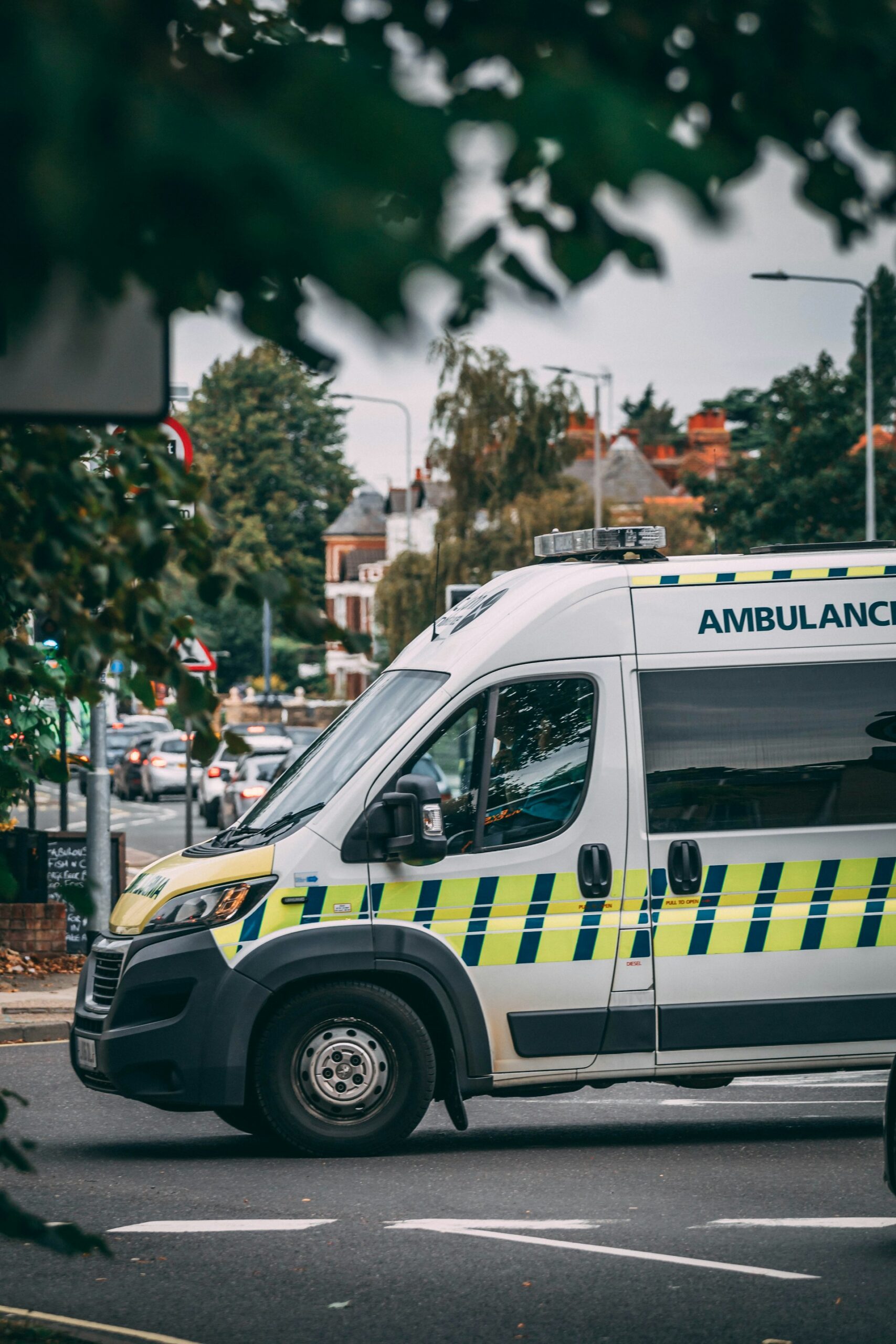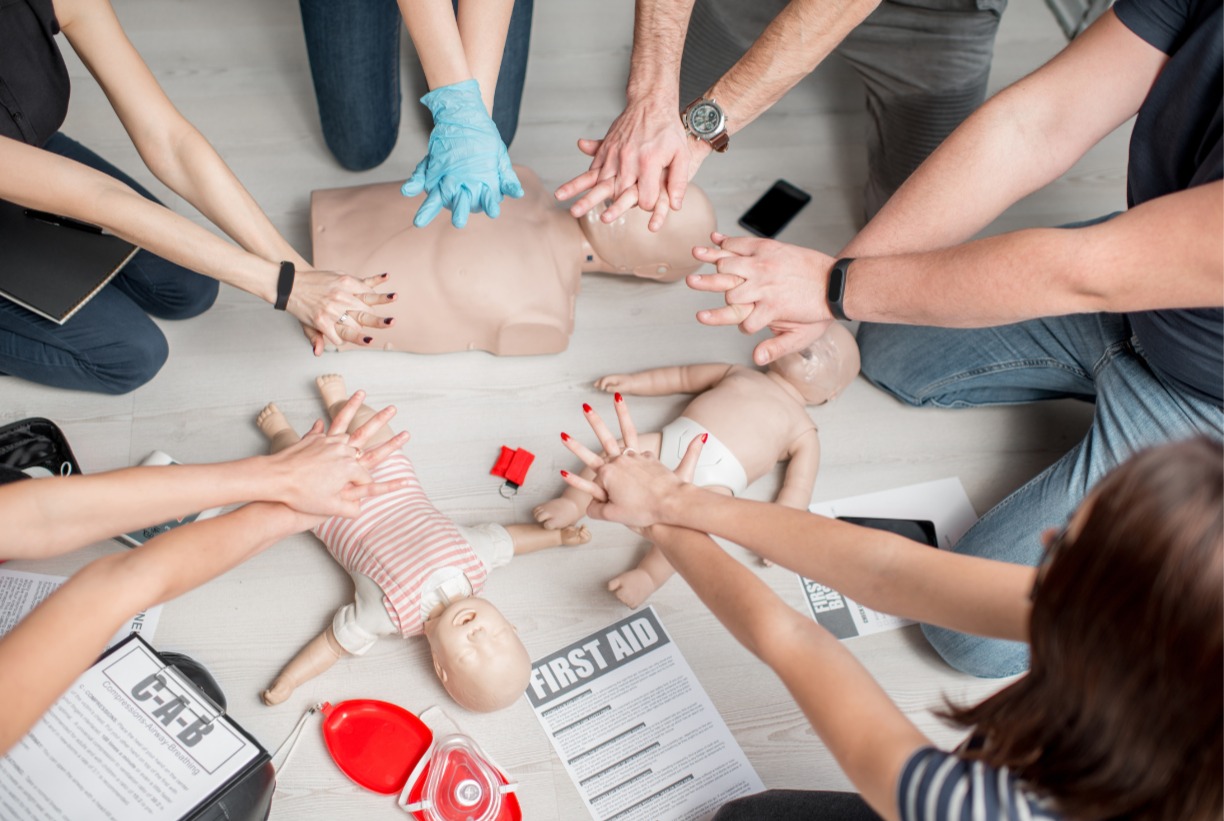Every year on 14 November, World Diabetes Day shines a spotlight on one of the world’s fastest-growing health conditions. It’s an important reminder that diabetes can affect anyone, and that knowing how to recognise and respond to a diabetic emergency could one day save a life.
In the UK, more than 5 million people are living with diabetes, and around 850,000 remain undiagnosed (Diabetes UK). That means most workplaces could include someone affected by the condition – making awareness and first aid readiness essential.
This blog explores what a diabetic emergency looks like, the key warning signs to watch for, and the vital first aid steps that could make all the difference – helping you and your team feel confident and prepared at work.
What Is a Diabetic Emergency?
A diabetic emergency happens when a person’s blood sugar level becomes dangerously high or low. The two main types are:
- Hypoglycaemia (low blood sugar) – when blood glucose levels drop too low, usually because of too much insulin, missed meals, or increased physical activity.
- Hyperglycaemia (high blood sugar) – when glucose levels rise too high, often because of missed medication, illness, or dehydration.
Both can cause serious complications if not treated quickly. According to the NHS, hypoglycaemia is the more common emergency in daily life, and it can develop suddenly. (NHS UK – Low Blood Sugar (Hypoglycaemia))
Recognising the Signs
Knowing what to look for helps first aiders act fast and effectively.
Signs of Low Blood Sugar (Hypoglycaemia):
- Shaking or trembling
- Sweating or clammy skin
- Hunger or weakness
- Confusion or irritability
- Blurred vision
- Dizziness or faintness
If not treated, the person may become drowsy, unresponsive, or even lose consciousness.
Signs of High Blood Sugar (Hyperglycaemia):
- Extreme thirst and frequent urination
- Tiredness and nausea
- Warm, dry skin
- Fruity-smelling breath (a sign of diabetic ketoacidosis)
- Drowsiness or confusion
While hyperglycaemia develops more slowly, both conditions need prompt attention. If you’re unsure which is happening, always treat for low blood sugar first – it’s safer and more likely to help.
What to Do in a Diabetic Emergency
If the person is conscious and able to swallow safely:
- Help them to sit or rest somewhere safe.
- Offer a sugary drink (such as fruit juice or non-diet fizzy drink), glucose tablets, or a small handful of sweets.
- Wait a few minutes and see if their symptoms improve.
- Once they start to feel better, give a longer-lasting carbohydrate snack, such as biscuits, cereal bar or a sandwich.
- Stay with them until they fully recover.
If the person is unconscious, drowsy, or unable to swallow:
- Do not give them anything to eat or drink.
- Call 999 immediately and tell the operator it’s a suspected diabetic emergency.
- Place the person in the recovery position and monitor their breathing until help arrives.
If in doubt, it’s always better to call for medical help. Quick, calm action can save a life.
🩵 First Class First Aid Tip Box
✔️ Create a “Hypo Kit” at work – stock it with glucose gels, sugary drinks, and sweets. Keep it where first aiders can easily find it.
✔️ Encourage open communication – if a colleague has diabetes, ask if they’d like a plan in place for managing low blood sugar episodes.
✔️ Refresh your first aid training – make sure your team knows how to spot the signs of hypoglycaemia and how to respond safely.
✔️ Review first aid kits – add glucose gels or sugar sachets alongside plasters and bandages. A small addition can make a big difference.
Diabetes and the Workplace
Workplaces have a key role to play in diabetes awareness and safety. The Equality Act 2010 recognises diabetes as a long-term condition, meaning employers must make reasonable adjustments to support staff. But beyond compliance, good practice includes:
- Allowing flexible break times for meals or blood sugar checks.
- Providing private spaces for glucose testing or insulin use.
- Training first aiders to recognise and respond to diabetic emergencies.
A supportive culture helps staff feel safe and confident, while reducing the risk of medical incidents at work.
Final Thoughts
Diabetic emergencies can happen quickly – but with awareness, preparation, and the right training, they don’t have to end in crisis.
This World Diabetes Day, take a moment to review your workplace’s first aid readiness.
Do your staff know what to do if a colleague shows signs of low blood sugar?
Do your first aid kits include glucose or sugary snacks?
At First Class First Aid, we believe knowledge builds confidence – and confident first aiders save lives.
Let’s make every workplace a safer place for everyone living with diabetes. Get in touch if you’d like more information on first aid training for your workplace First Aid Courses and Classes in Norfolk | First Class First Aid





